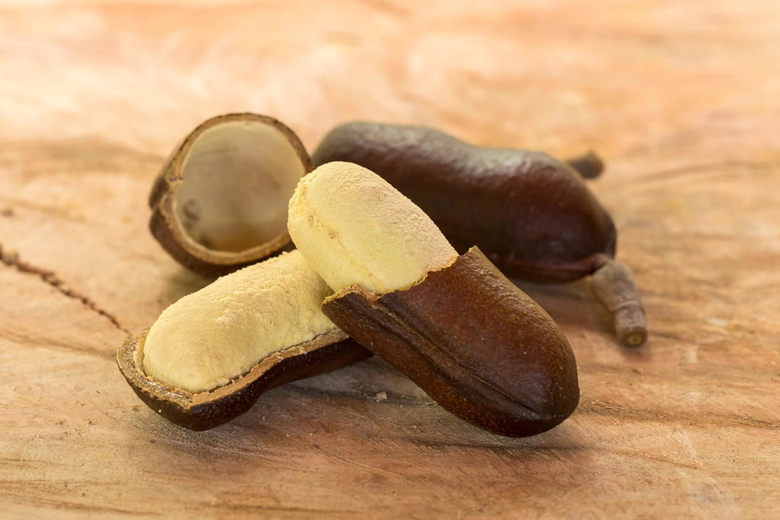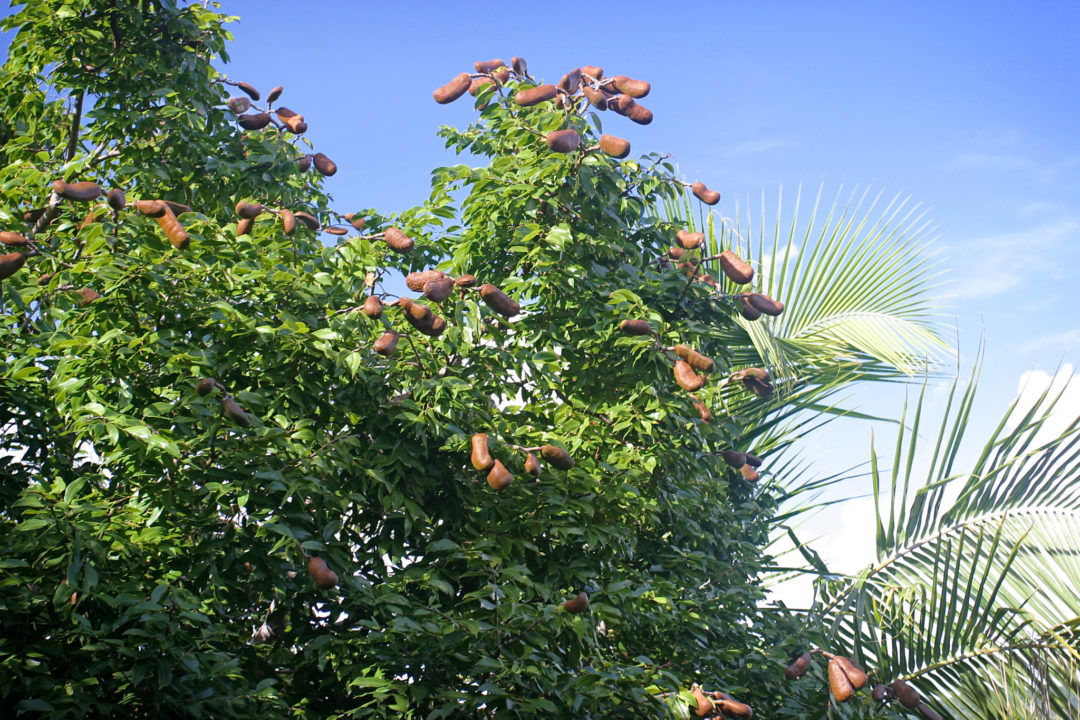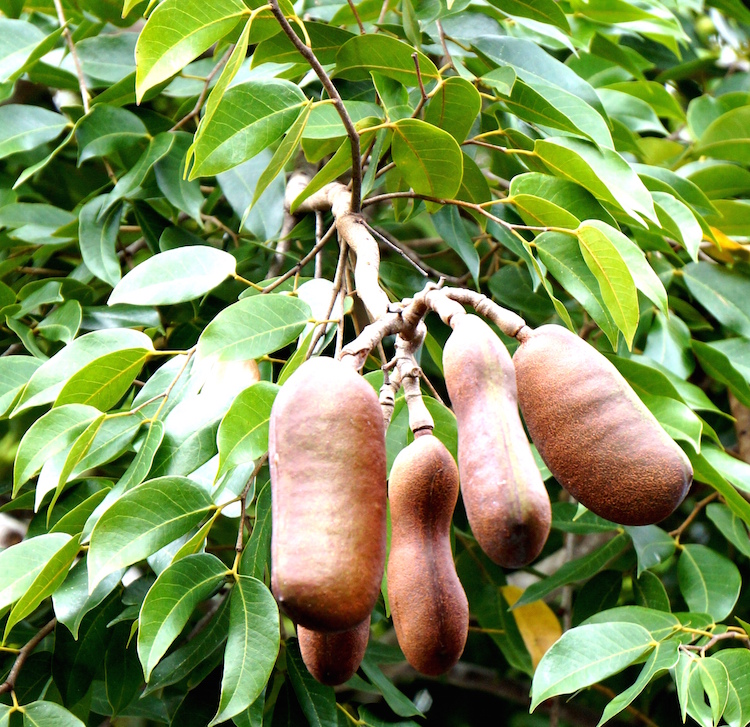Growing up in Guyana, particularly in the rural areas, one may have experienced, even if it was just once, the fruit known to most only as, “Stinkin Toe,” which as you might have already guessed, is a fruit, yes a fruit, shaped like what many say resembles a toe, and carries a very unappealing smell.
Interestingly enough, as unappealing as this fruit may seem, it is said to be a rather delicious fruit which carries a surprising number of health benefits.
Before we get into that though, let’s talk about its name and origin.

Stinking Toe | Image Source: https://www.atlasobscura.com/foods/stinking-toe-fruit
What is Stinkin’ Toe; where does it come from?
Hymenaea courbaril or commonly known as the West Indian Locust, Brazilian copal, umami-gum, Brazilian Cherry, South American Cherry or as we know it- Stinkin Toe, is a legume in the Fabaceae family.
Its tree, which is considered to be evergreen with massive spreading branches and a heavy, umbrella-shaped crown. It grows slowly, but can reach an eventual height of 30 metres, with some specimens up to 45 metres.
The tree itself can be found throughout much of the Caribbean, Central America, and South America; the fruits of the West Indian Locust tree mature during the rainy seasons of their native countries and are harvested during the warmest months.
Devouring the Yummy Stinkin’ Toe
During the course of writing about this peculiar fruit, ThingsGuyana asked a friend whether he ever ate it, his answer, as suspected, was no. But his reason for this no was not because of the fruit’s unappealing scent but rather his lack of knowledge on how to eat it.
This being said, let’s take a look at how it is actually eaten; most naturally, like eating a walnut, we get rid of the shell, which as I understand can done by cracking it open with a hammer or maybe even a rock depending on what is available.
Once you’re able to get past this, all there’s left to do is devour the actual “flesh” of the fruit, which is a fibrous and powdery and is said to have the consistency of a clump of flour.
Taste wise, Stinkin’ Toe has been compared to dried (powdered) milk with hints of parmesan cheese and herbs.

Locust Tree with Fruits | Image Source: https://www.stjohntradewinds.com/
Other ways to enjoy this fruit
But while many enjoy Stinkin’ Toe in its raw state, the fruit can also be cooked; in Jamaica, the pulp is blended with water, sugar, and spices to make a refreshing beverage. In Brazil, where the fruit is known as jatobá, bakers use the dried powder of the pulp to make a biscuit-like pastry known as a broinha.
Stinkin’ Toe can also be made into ice cream and custards and even fermented into an alcoholic beverage.
Other Cool and Interesting Facts about Stinkin’ Toe:
-

Stinking Toe on the Tree| Image Source: https://www.stjohntradewinds.com/
Contrary to its name, it is said to be a very tasty fruit- maybe we can all use this as a form of encouragement to give a try sometime.
- It is rich in carbohydrates, iron, Calcium and also has considerable reserves of Vitamin A.
- In Costa Rica and Panama, Stinkin’ Toe is considered to be an aphrodisiac for men as it reportedly increases one’s sex drive.
- In Eastern Asia the fruit is considered a delicacy for those on a weight-loss programme, since it is low in calories and high on nutrition.
- The fruit is also a notable appetite enhancer, used by Central American bodybuilders and athletes. Some researchers have concluded that stinking toe, in conjunction with other supplements, have enabled athletes to reach new personal levels in training and to break previous growth records.
- In Costa Rica, the fruit is widely appreciated as a galactogogue. The chemicals, rich in the locust fruit, is a substance that promotes lactation/milk production both in expectant and nursing mothers.
- The strange odor is actually a sign the fruit is ripe. If it lacks an odor, the fruit is likely rotten- who would’ve guessed right?
- The wood from the tress is used for making high class furniture, cabinet, in construction, heavy duty flooring, and ship building, among other purposes.
- A tea can be made from the bark a practice that has been done in local folk medicine as a cure-all; The leaves, sap, and fruits have medicinal uses as well particularly against coughs, cystitis, hepatitis, prostatitis, bronchitis, anemia, wounds, mouth ulcers, diabetes, etc.
- As a result of it being a good source of antioxidants which have the ability to neutralize free radicals that damage healthy cells of the body, they are known to slow down the process of aging, which can register externally as well as internally.
- The high level of antioxidants also helps in the management of oxidative stress and inflammation, both of which are linked to health problems like osteoarthritis, cancer and heart disease.
Watch This (It’s called “Stinking Toe” and yes, I ate some!)
References:
- https://www.facebook.com/aocjamaica/posts/10-facts-about-stinking-toe-with-a-name-like-stinking-toe-we-understand-why-very/1139473686132656/
- http://www.bbc.com/travel/story/20110719-worldwide-weird-bite-into-a-stinking-toe
- https://www.atlasobscura.com/foods/stinking-toe-fruit
- https://www.medicaldaily.com/star-fruit-stinking-toe-4-exotic-fruits-will-do-wonders-your-body-279302
- https://pfaf.org/user/Plant.aspx?LatinName=Hymenaea+courbaril
- https://www.healthybuilderz.com/health-benefits-stinking-toe/
- https://jamaicans.com/stinking-toe-juice/






